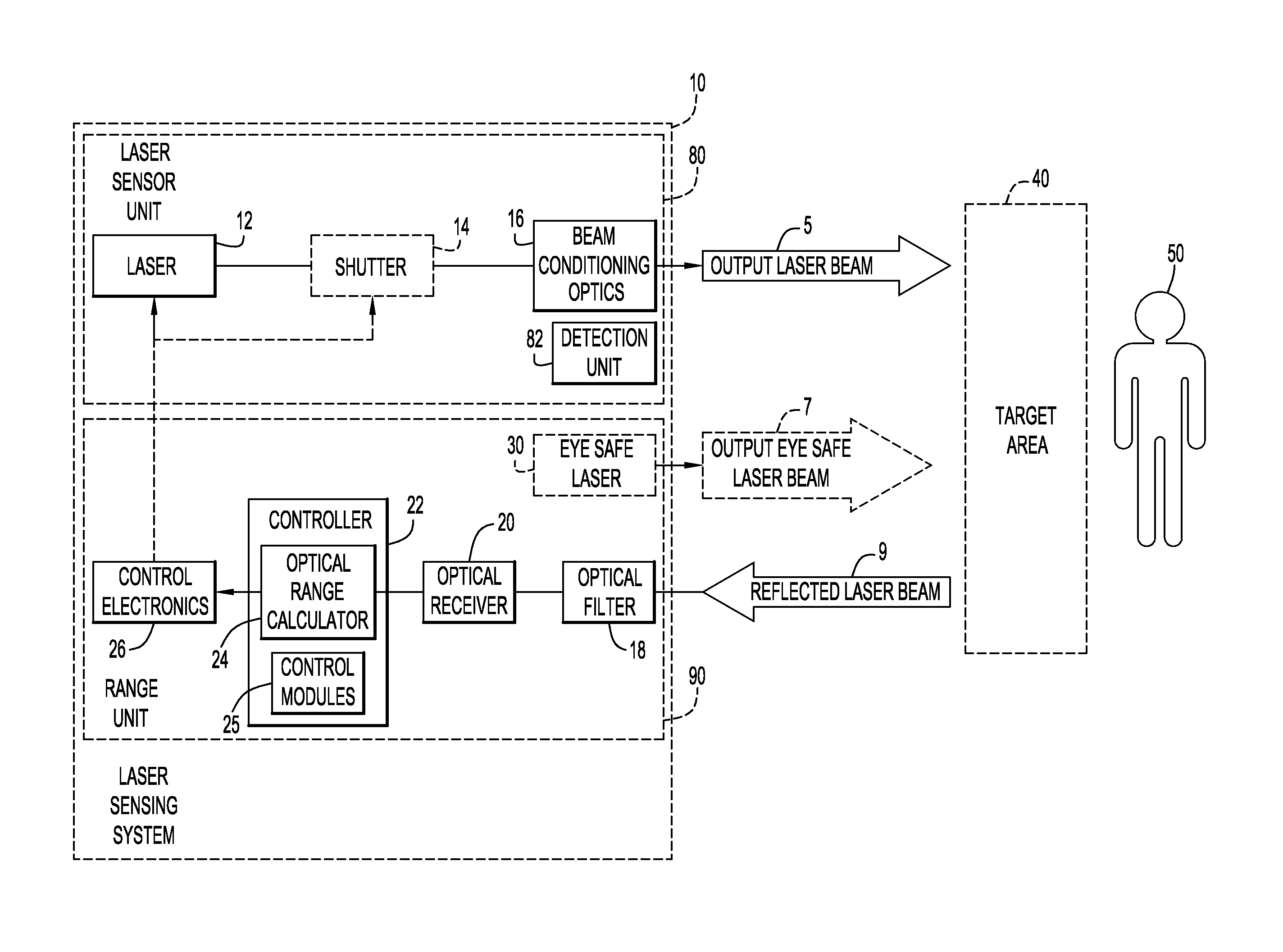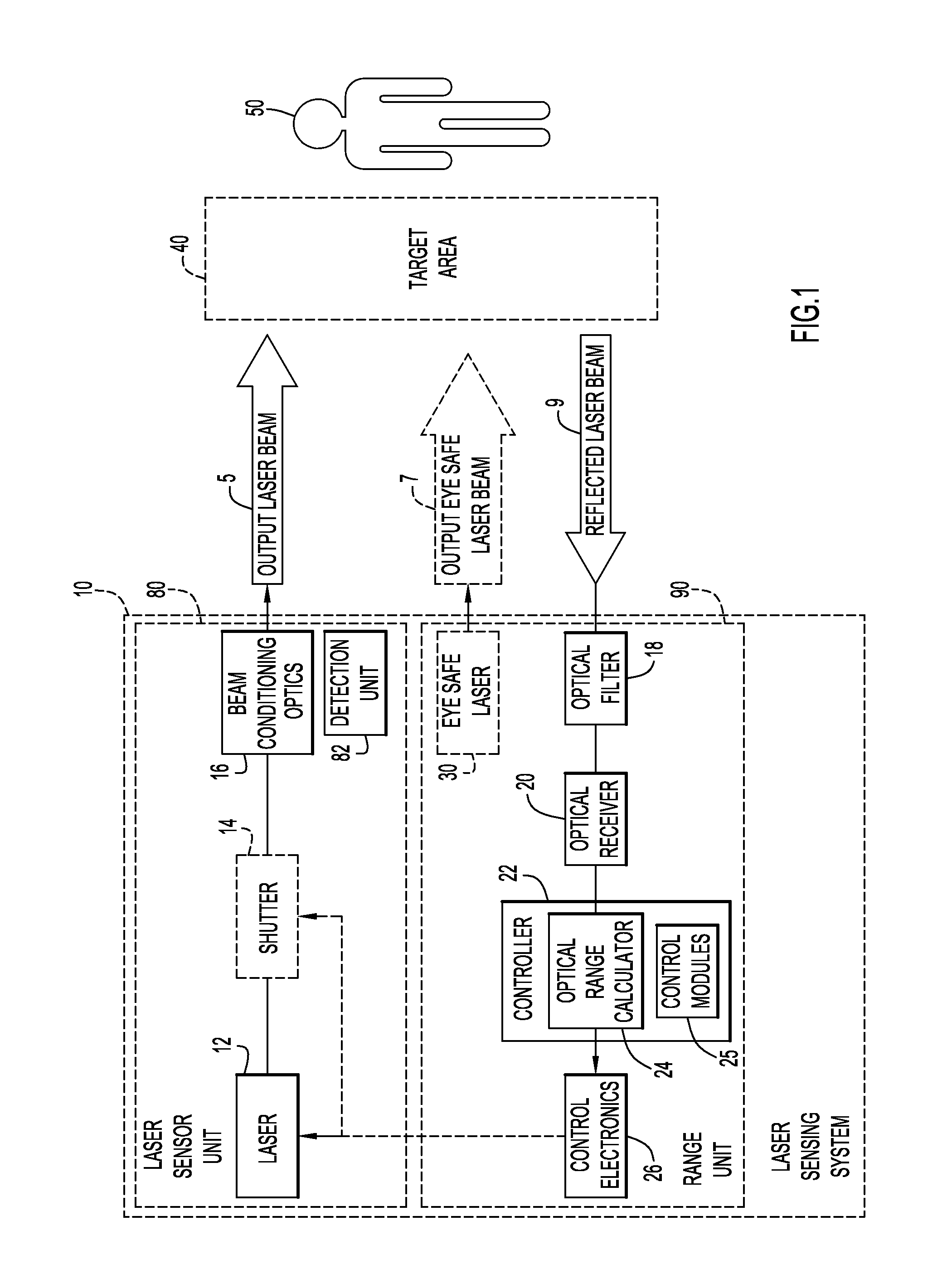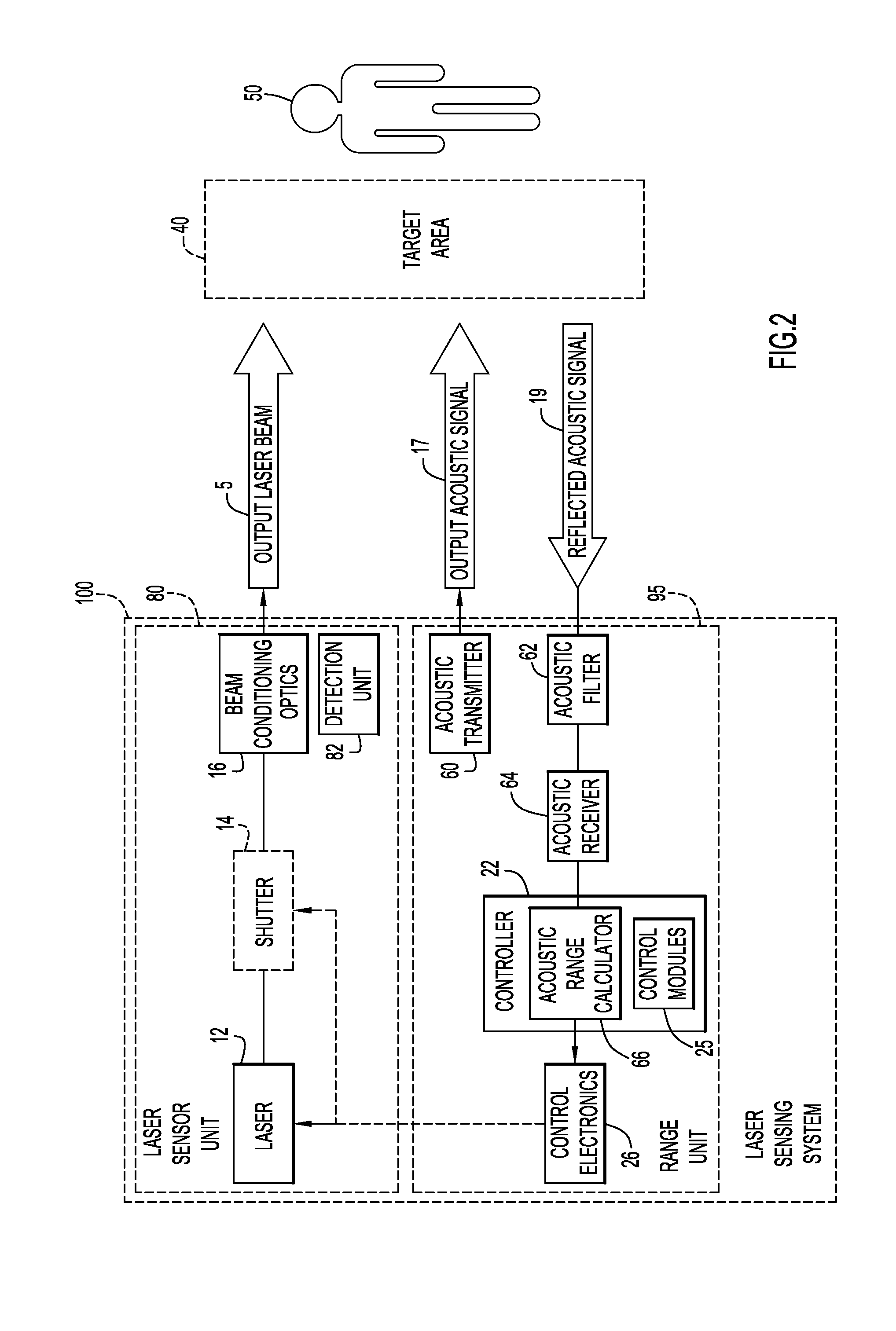Method and Apparatus for Controlling Laser Transmissions for Enhanced Safety
a laser transmission and enhanced safety technology, applied in the field of laser systems, can solve the problems of limiting personnel exposure, not always possible, and affecting the safety of laser sensing systems intrinsically non-eye-safe, and achieve the effect of enhancing the safety of intrinsically non-eye-safe limited-range laser sensing systems
- Summary
- Abstract
- Description
- Claims
- Application Information
AI Technical Summary
Benefits of technology
Problems solved by technology
Method used
Image
Examples
Embodiment Construction
[0016]Present invention embodiments protect nearby persons or other objects (e.g., animals, etc.) that are outside an operating range of a laser sensing system by disabling transmission of a non-eye-safe laser beam. The beam transmission is disabled (e.g., including interruption or termination of the non-eye-safe laser beam, or modifying the non-eye-safe laser beam to be eye-safe) in response to no detection of a hard or intended target (e.g., including solid substances and non-solid but optically opaque substances (e.g., a liquid, a gas, a cloud, etc.) that stops the non-eye-safe laser beam (e.g., or attenuates it sufficiently to render it eye-safe)) within the operating range of the laser sensing system, or when an object is detected between the laser sensing system and the spatial interval that defines the operating range. For example, if the operating range of a laser sensing system is 0.5 to 3.5 meters, and the range to a reflecting or scattering surface impacted by a transmitt...
PUM
 Login to View More
Login to View More Abstract
Description
Claims
Application Information
 Login to View More
Login to View More - R&D
- Intellectual Property
- Life Sciences
- Materials
- Tech Scout
- Unparalleled Data Quality
- Higher Quality Content
- 60% Fewer Hallucinations
Browse by: Latest US Patents, China's latest patents, Technical Efficacy Thesaurus, Application Domain, Technology Topic, Popular Technical Reports.
© 2025 PatSnap. All rights reserved.Legal|Privacy policy|Modern Slavery Act Transparency Statement|Sitemap|About US| Contact US: help@patsnap.com



